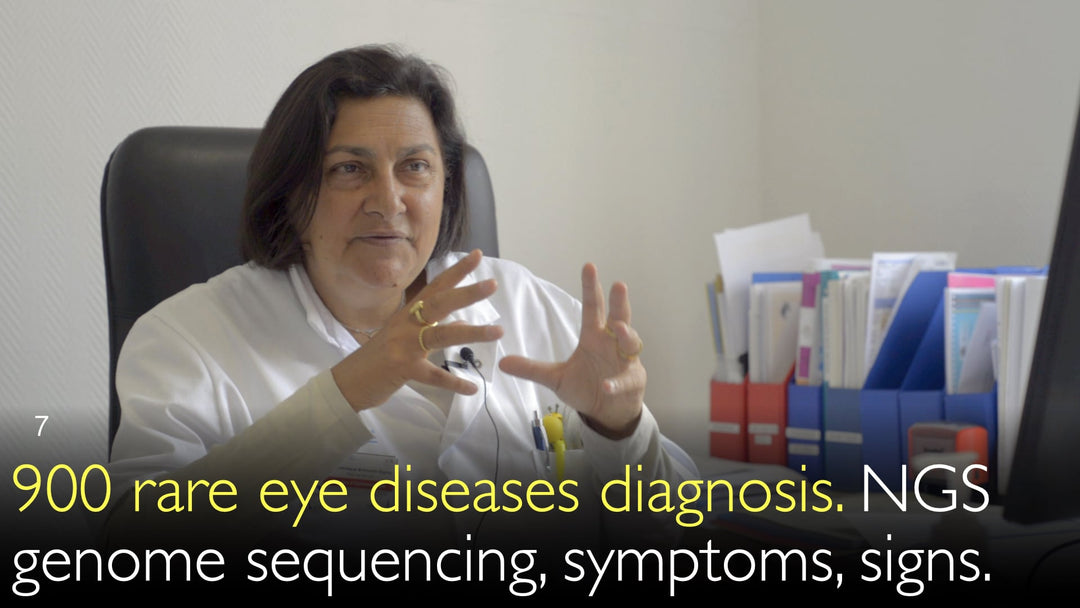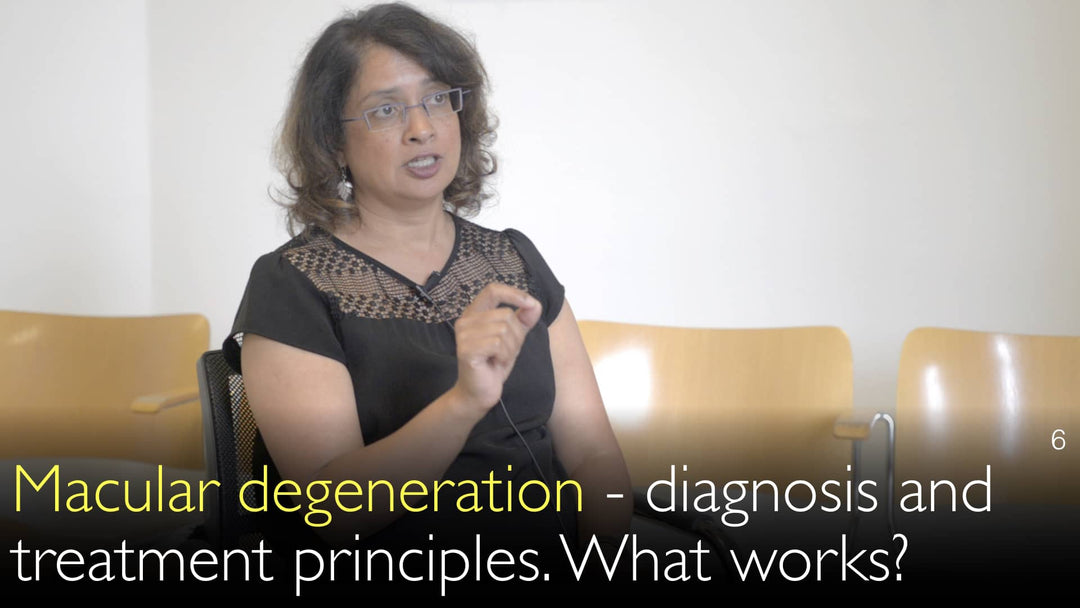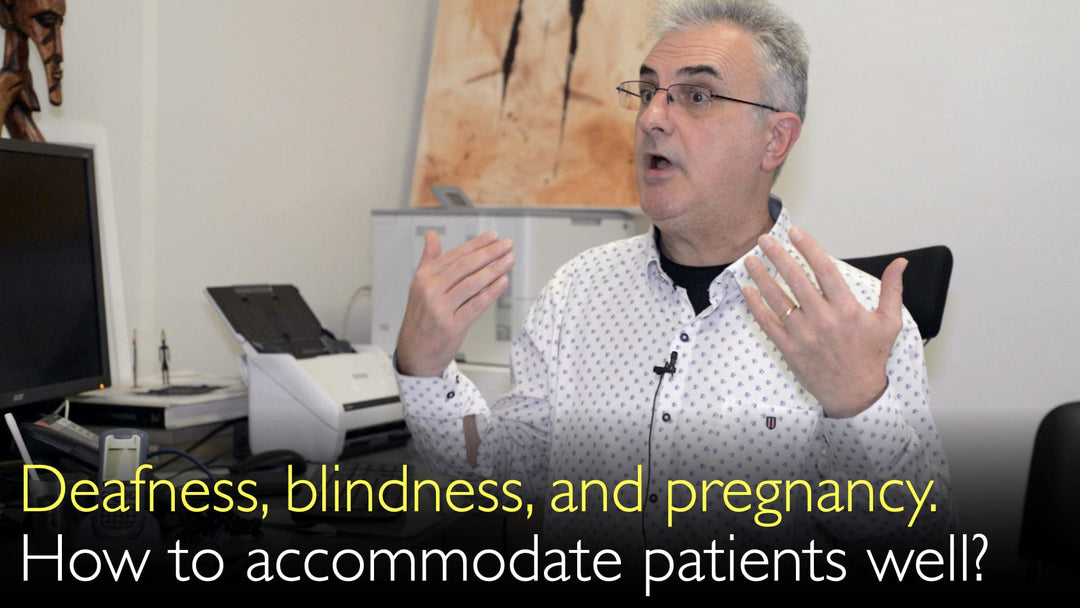Leading expert in rare eye diseases, Dr. Dominique Bremond-Gignac, MD, explains how advanced imaging and next-generation genetic sequencing are critical for diagnosing over 900 rare genetic eye conditions in children and young adults. She details the diagnostic pathway from precise phenotyping to whole-genome sequencing, highlighting the role of specialized centers and patient associations in achieving a correct diagnosis and improving visual outcomes.
Diagnosing Rare Genetic Eye Diseases: Advanced Imaging and Genome Sequencing
Jump To Section
- Rare Eye Diseases Overview
- Phenotype Diagnosis and Advanced Imaging
- Genetic Testing and Sequencing Methods
- Whole Genome Sequencing Benefits
- Patient Referral and Specialist Centers
- Clinical Guidelines and Patient Role
- Full Transcript
Rare Eye Diseases Overview
Rare eye diseases are the leading cause of visual impairment and blindness in children and young adults. Dr. Dominique Bremond-Gignac, MD, notes there are over 900 known rare eye diseases, with many having a genetic origin. These conditions include a wide spectrum of disorders, such as retinitis pigmentosa and various developmental eye anomalies. The sheer number of these diseases makes achieving a correct diagnosis a significant clinical challenge.
Phenotype Diagnosis and Advanced Imaging
The first and most critical step in diagnosing a rare eye disease is establishing a precise phenotype, which is a detailed description of the disease's symptoms and clinical signs. Dr. Dominique Bremond-Gignac, MD, emphasizes that without an accurate phenotype, identifying the correct genetic cause is nearly impossible. Her center, OPHTARA, has developed one of the largest and most accurate pediatric eye imaging platforms globally.
This includes specialized, hand-held Optical Coherence Tomography (OCT) devices and very wide-field retinal funduscopy systems. These tools are specifically adapted for use with children, allowing for quicker and easier diagnosis. This advanced imaging is essential for creating a detailed clinical picture before moving to genetic analysis.
Genetic Testing and Sequencing Methods
Once a thorough phenotype is established, the next step is genotyping to find the genetic cause of the rare eye disease. This process involves collaboration with clinical geneticists and molecular geneticists. The initial genetic test of choice is often Next-Generation Sequencing (NGS).
Dr. Dominique Bremond-Gignac, MD, explains that a typical NGS panel for rare eye diseases analyzes around 200 genes known to be affected. This method can successfully identify the genetic mutation in a significant proportion of cases, such as solving about 30% of retinal diseases and up to 90% of aniridia cases, which are frequently linked to PAX6 gene mutations.
Whole Genome Sequencing Benefits
When NGS testing does not yield a diagnosis, whole-genome sequencing (WGS) is the next step. Dr. Dominique Bremond-Gignac, MD, is in charge of a platform called Sequoia that performs this comprehensive analysis. The cost of WGS is continually decreasing, making it a more accessible tool.
WGS is powerful because it can identify new disease-causing genes and novel mutations that targeted panels might miss. Dr. Bremond-Gignac cites the recent discovery of the ITPR1 mutation associated with Gillespie syndrome, a form of aniridia, as an example of how WGS leads to new genetic discoveries and a better understanding of rare eye diseases.
Patient Referral and Specialist Centers
Families often navigate a long and frustrating diagnostic odyssey before reaching a tertiary care center specializing in rare eye diseases. Dr. Dominique Bremond-Gignac, MD, states that patients are typically referred to her center, but this is not always sufficient. Collaboration with patient associations, such as Aniridia Europe, is crucial for connecting families with the specialized care they need.
These associations help disseminate information and guide patients toward expert centers. Dr. Anton Titov, MD, and Dr. Bremond-Gignac discuss how this network is vital for ensuring that children with complex or undiagnosed vision problems eventually find the right specialist.
Clinical Guidelines and Patient Role
Spreading knowledge about rare eye diseases is a key part of improving diagnosis and treatment. Dr. Dominique Bremond-Gignac, MD, highlights the importance of creating and distributing clinical guidelines for both general practitioners and patients. These guidelines provide critical information, such as the need for preservative-free eye drops for patients with aniridia.
Dr. Anton Titov, MD, agrees, noting that this represents a shift toward patient-driven healthcare. Empowered patients who understand their condition and the relevant clinical guidelines can become active partners in their own care, advocating for themselves and ensuring they receive the specialized treatment they require from their medical team.
Full Transcript
Rare eye diseases are the leading cause of visual impairment and blindness for children and young adults. There are over 900 rare eye diseases. Many eye diseases are genetic. They include retinitis pigmentosa and developmental eye anomalies.
Dr. Anton Titov, MD: How to use genetic methods for the correct diagnosis of rare eye disease? Which genetic tests are used? Is there a role for whole genome sequencing? When should parents ask for genetic testing if a child has a vision problem?
Dr. Dominique Bremond-Gignac, MD: It is a very good question about genetic rare eye diseases because it is sometimes very difficult to have a correct diagnosis for these rare diseases. Why? Because they are rare genetic eye diseases. There are probably around 1000 rare eye diseases. So that's many eye diseases.
It's important to have a good phenotype—a description of symptoms and disease signs—before going to genotype, the genetic cause. If you don't have a good symptom description, you will not establish the correct diagnosis.
First of all, we need to describe eye disease signs with good imaging. We are an OPHTARA Rare Eye Diseases Center. We developed the largest and the most accurate platform of eye imaging for children. Of course, we have that for adults also, but for children especially.
The imaging should be adapted to a child. We need to have some handpieces. We have to have an easy diagnostic system, a quicker eye disease diagnostic system. For instance, we have nice OCT (Optical Coherence Tomography) for children that are hand-held pieces.
We also have a very wide field retinal funduscopy with a large system. These diagnostic tools are critical to making a good diagnosis of rare eye disease. We must make a good phenotype diagnosis. After that, we need genotyping to find a cause of rare eye disease.
We need geneticists, clinical geneticists, but also we need good molecular genetics. I am in charge of a platform called Sequoia for whole-genome sequencing. We also work with Professor Sophie Valleix for molecular genetics.
We are interested in anterior eye segment disorders and anterior segment dysgenesis. We also study retinal disease, of course. We do first NGS sequencing, which usually has 200 genes affected in rare eye genetic diseases.
But if NGS sequencing is not good, we go to whole-genome sequencing. This genetic testing platform is called Sequoia. It's very specific. We have multidisciplinary meetings to select the child to be diagnosed.
Then we use this NGS platform, and there is whole genome sequencing. It's very interesting because probably around 30% of retinal disease could be solved by NGS sequencing. Probably some pathology, like aniridia, can be solved in 90%, with PAX6 mutations identified by NGS sequencing.
But for other rare eye diseases, they must be explored widely. We can find out new affected genes. We can find new mutations that cause rare eye diseases. That's why it's very interesting.
If you look at aniridia, we had ITPR1 mutation that is associated with Gillespie syndrome. That's a very recent discovery of the gene for aniridia. So that's very interesting.
To summarize, a good phenotype with specific imaging is essential to diagnose rare eye disorders in children. After that, if you have a good phenotype, you can go to good genotyping. You can do whole genome sequencing, and the cost is decreasing all the time.
Dr. Anton Titov, MD: Probably by the time parents with children, pediatric patients, come to your tertiary care specialized eye center, they've seen several doctors. But the eye disease diagnosis still has not been figured out. Or children with eye problems received a more common diagnosis but perhaps incorrect diagnosis.
How do these pediatric patients eventually find you? Is it the initiative of their parents? Is that an initiative of the ophthalmologist? What happens more commonly?
Dr. Dominique Bremond-Gignac, MD: We have a lot of patients who are just referred to us. But it's sometimes not enough. We work with associations for rare eye diseases. That's very important to work together.
For instance, I'm a President of the Scientific Committee of Aniridia Europe Association, and also President of the Rare Eye Disease Association in France. When you have associations working with you, you can have the patients coming to the centers. You can diffuse information.
Also, it is important that we make clinical guidelines on rare eye diseases. Those clinical guidelines are useful for general practitioners. But clinical guidelines are also useful for the patients. This is very important.
For instance, in aniridia, you need to have eyedrops preservative-free. But that's not so easy for the general practitioner. If they just go to the clinical guidelines, they can read that, and so they know it.
After that, they can refer to an OPHTARA specialized eye center. But at least they have a knowledge of rare eye disease, which is valuable. So that's important to spread information about rare genetic eye diseases. That's an important point.
This is patient-driven healthcare because it is patients who ultimately are in charge of their health. Even though it's sometimes quite convenient to offload the responsibility for your health to the physician. A patient should probably take a look at the clinical guidelines relevant to one's disease or condition. Exactly.







